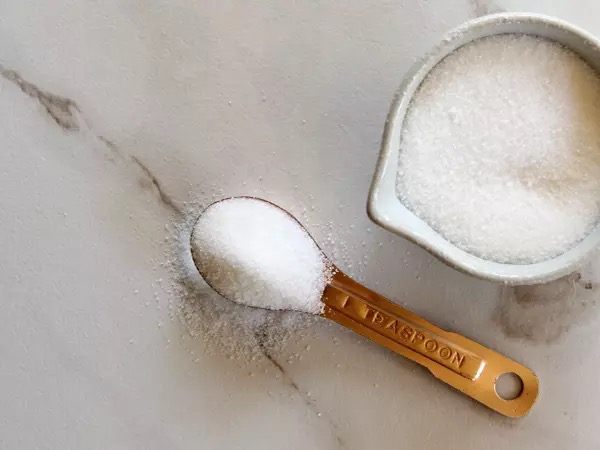Views: 222 Author: Sara Publish Time: 2025-11-09 Origin: Site








Content Menu
● What is aspartame and why it matters as a Sweetener
● Common product categories and brands containing Aspartame
● Why manufacturers blend aspartame with other Sweeteners
● Regulatory and safety context
● Quality, sensory, and processing considerations for aspartame-containing blends
● Practical guidance for your factory's blended Sweetener development and OEM/ODM
● Case study considerations for product development
● Market trends and consumer insights
● Operational and supply chain considerations for a China-based factory
● FAQ
>> 1. Is aspartame safe to use in foods and beverages?
>> 2. Which products commonly contain aspartame?
>> 3. How does aspartame behave in different processing conditions?
>> 4. Can aspartame be blended with natural Sweeteners?
>> 5. What should international manufacturers consider when sourcing aspartame blends?
Aspartame is one of the most widely used artificial sweeteners in the global market, beloved for its intense sweetness at very low concentrations. For manufacturers in the food, beverage, and healthcare sectors, understanding which products contain aspartame is essential for formulation, labeling compliance, consumer transparency, and product positioning. This article surveys the landscape of sweeteners that contain aspartame, identifies common product categories, discusses regulatory considerations, and offers practical guidance for blended sweetener development, OEM/ODM services, and tablet formulation. It also highlights how a Health Solutions factory—specializing in natural sweeteners, functional polyols, and dietary fibers—can integrate aspartame-containing and non-aspartame alternatives to meet diverse customer needs while preserving product quality and sensory appeal. Throughout, the keyword Sweetener appears prominently to support your marketing and SEO objectives.

Aspartame is a dipeptide artificial sweetener composed of two amino acids: aspartic acid and phenylalanine. It is approximately 200 times sweeter than sucrose, enabling low-calorie formulations in beverages, foods, and confections. Its efficacy as a Sweetener is balanced by regulatory guidelines, safety assessments, and consumer perceptions that vary across markets. For manufacturers, the key questions are which formulations utilize aspartame, how to blend it with other sweeteners to achieve target sweetness profiles, and how to ensure stability, mouthfeel, and aftertaste are acceptable in final products. This section lays the groundwork for identifying products that typically contain aspartame and the reasons behind its use as a primary or secondary Sweetener in diverse categories.
- Diet beverages and zero-sugar drinks: Popular cola and non-cola diet beverages frequently rely on aspartame as a primary Sweetener, either alone or in combination with other sweeteners to optimize taste and aftertaste.
- Tabletop sweeteners: Individual packets and blends marketed under brand names such as Nutrasweet, Equal, and Sugar Twin are classic examples of aspartame-based Sweeteners designed for direct sweetening of beverages, cereals, yogurt, and foods. These tabletop products are often used in blended formulations for food service, hospitality, and consumer households.
- Sugar-free gums and candies: Many chewing gums and sugar-free confections incorporate aspartame to deliver a clean, long-lasting sweetness. In some formulations, aspartame is used in blends to balance sweetness with polyols and other textural ingredients.
- Gelatin desserts and puddings: Sugar-free or reduced-sugar gelatin products may rely on aspartame to achieve the desired sweetness while maintaining a low caloric load.
- Syrups and flavor enhancers: Sugar-free syrups and flavor boosters used in coffee shops, cafes, and households may contain aspartame as part of a multi-sweetener system to deliver immediate sweetness with reduced sugar content.
- Food and snack dressings: Certain reduced-sugar condiments, syrups, and flavorings use aspartame in combination with other Sweeteners to achieve targeted sweetness profiles and stability in processing conditions.
- Pharmaceutical and health foods: Some chewable tablets, effervescent products, and dietary supplements use aspartame to improve palatability, particularly when masking bitter or astringent flavors.
- Flavor optimization and aftertaste management: Aspartame's sweetness can be complemented by other Sweeteners to reduce aftertaste or bitterness typical of some intense Sweeteners.
- Temperature and storage stability: In some applications, blending aspartame with other non-nutritive or nutritive Sweeteners can improve stability across processing temperatures and storage conditions.
- Sugar-reduction targets: Blends allow food manufacturers to achieve desired sweetness levels while balancing caloric content, glycemic response, and label claims.
- Regulatory and sensory flexibility: Blending supports formulation that complies with regional regulations and consumer expectations for taste, texture, and mouthfeel.
- Global safety assessments generally recognize aspartame as safe at approved use levels, but regulatory stances may vary by country and health authority. For example, major health agencies have conducted hazard and risk assessments and issued guidance on permissible use levels, labeling, and consumer safety considerations. This context is important for your OEM/ODM activities when designing blends for overseas manufacturers who must meet diverse regulatory regimes.
- Labeling practices typically require disclosure of aspartame as a Sweetener in ingredient lists, and many product categories specify the presence of phenylalanine, as some individuals with phenylketonuria (PKU) must avoid phenylalanine-containing products. Accurate labeling supports consumer safety and compliance with international standards.
- Stability and pH sensitivity: Aspartame can be sensitive to high temperatures and acidic environments, which can influence sweetness perception and shelf life. Blends often incorporate stabilizers or protective carriers to preserve sweetness during processing and storage.
- Mouthfeel and texture: While aspartame provides intense sweetness, it contributes little in bulk. Therefore, blends frequently include bulking agents, polyols, or dietary fibers to achieve desirable mouthfeel and body in products such as beverages, candies, and tablet formulations.
- pH and ionic interactions: Product matrices with minerals, acids, or bitter compounds require careful formulation to prevent sweetness loss or off-notes. The use of buffering systems and anti-oxidants can help maintain sensory quality in aspartame-containing products.
- Stability in effervescent products: When used in effervescent tablets or granules, aspartame blends must account for rapid dissolution and potential interactions with effervescence catalysts or emitters to ensure clean sweetness release.

- Tailor blends to target markets: Different regions have varying acceptance of artificial Sweeteners, labeling expectations, and regulatory limits. Develop flavors and sweetness profiles that align with local consumer preferences while offering a range of options—some containing aspartame and others using alternative Sweeteners like natural or polyol-based systems.
- Emphasize clean label positioning where possible: For products positioned as "natural" or "functional," consider using aspartame in combination with natural Sweeteners within permitted claims, or offer non-aspartame alternatives to meet broader consumer demand.
- Provide comprehensive technical data: When presenting blends to overseas manufacturers, supply detailed specifications, stability data, processing recommendations, and sensory profiles across product formats (beverages, confectionery, tablets, syrups). This builds confidence in OEM/ODM partnerships.
- Support with stability and compatibility testing: Evaluate the compatibility of aspartame with your core materials—natural Sweeteners, polyols, and dietary fibers—under proposed processing conditions (mixing, drying, tableting, filling) to ensure consistent sweetness and product integrity.
- Develop a robust FAQ and labeling practice: Help clients navigate common questions about aspartame, its safety, and regulatory status. Provide clear labeling guidance and bilingual documentation to facilitate export compliance and customer understanding.
- Beverage powders and ready-to-make drinks: Formulations often use aspartame in combination with other Sweeteners to achieve a smooth sweetness curve with minimal aftertaste and good solubility. In collaboration with your team, create prototypes that demonstrate how natural Sweeteners and polyols can complement aspartame for a balanced sensory profile.
- Diet confectionery and gums: For gums and sugar-free candies, consider moisture management and texture enhancers to offset the mouthfeel differences that can accompany high-intensity Sweeteners. Blends can be designed to deliver long-lasting sweetness with acceptable chewiness and stability.
- Pharmaceutical-grade tablets: For tablet formulations, aspartame can be used as a sweetening excipient to improve palatability. Ensure compatibility with tablet binders, disintegrants, and coating systems, and optimize tablet hardness and dissolution rates to maintain user experience.
- Growing demand for low-calorie options across food, beverage, and healthcare sectors continues to drive aspartame-containing products, particularly in regions with strong public health and obesity-reduction initiatives.
- Consumers increasingly seek transparency in labeling and prefer clear information about ingredients, including Sweeteners. Offering a line of products with clearly labeled aspartame-containing options alongside non-aspartame alternatives can expand market reach.
- The integration of aspartame with natural Sweeteners (such as stevia or monk fruit derivatives) and polyol blends can help create appealing taste profiles while addressing consumer concerns about sugar intake and caloric content.
- Sourcing and quality control: Establish reliable suppliers for aspartame and compatible Sweeteners, ensuring batch consistency, purity, and compliance with international quality standards.
- Regulatory compliance: Maintain up-to-date knowledge of regional regulatory requirements for aspartame-containing products, including labeling, permissible usage levels, and any country-specific restrictions.
- Intellectual property and branding: Protect your formulations and blends through appropriate documentation, non-disclosure agreements, and clear branding strategies that differentiate your OEM/ODM offerings in overseas markets.
- Documentation and communication: Provide clear, multilingual technical sheets, safety data sheets, and product specifications to international clients to streamline collaboration and reduce translation-related risks.
Aspartame remains a central tool in the toolkit of modern Sweetener systems, enabling low-calorie formulations across beverages, confections, and tablets. For a China-based factory specializing in natural Sweeteners, functional polyols, and dietary fibers, strategically integrating aspartame-containing blends with non-aspartame options can broaden market opportunities while delivering targeted sweetness, stability, and sensory quality. By combining rigorous quality control, transparent labeling, and responsive OEM/ODM support, the business can meet diverse international customer needs, support regulatory compliance, and sustain growth in a competitive global market.

Aspartame has undergone extensive safety evaluations by regulatory authorities worldwide and is approved for use in many countries at specified levels. However, individuals with phenylketonuria (PKU) should avoid phenylalanine-containing products, including those with aspartame. Manufacturers should follow approved usage levels and labeling requirements to ensure consumer safety.[3][7]
Common products include diet beverages, zero-sugar drinks, sugar-free gums, tabletop sweeteners, sugar-free gelatin, and certain reduced-sugar syrups and condiments. Brands such as Nutrasweet and Equal are well-known, and many consumer-packaged foods may contain aspartame as part of a multi-sweetener system.[2][4][7]
Aspartame can be sensitive to high temperatures and acidic environments, affecting sweetness stability. Blends with stabilizers, bulking agents, or polyols can mitigate these effects and help maintain taste and texture across processing steps.[7][8]
Yes, aspartame is commonly blended with natural Sweeteners or polyols to balance taste, reduce aftertaste, and achieve sugar-reduction targets. These blends are tailored to market preferences and regulatory constraints.[4][5]
Manufacturers should consider supply reliability, regulatory compliance, labeling requirements, sensory profiling, and compatibility with other ingredients (including polyols and dietary fibers). Providing robust technical data and testing support facilitates smooth OEM/ODM engagements.[4][7]
[1](https://en.wikipedia.org/wiki/Aspartame)
[2](https://www.cbsnews.com/news/aspartame-carcinogen-who-what-products-contain-aspartame/)
[3](https://www.nbcnews.com/health/cancer/foods-contain-aspartame-artificial-sweetener-possible-carcinogen-rcna93913)
[4](https://www.reuters.com/business/healthcare-pharmaceuticals/food-beverage-products-that-mention-aspartame-their-labels-2023-07-14/)
[5](https://www.loseit.com/articles/a-list-of-foods-containing-aspartame/)
[6](https://www.ncbi.nlm.nih.gov/books/NBK278991/table/diet-treatment-obes.table20nut/)
[7](https://www.fda.gov/food/food-additives-petitions/aspartame-and-other-sweeteners-food)
[8](https://pdf.dfcfw.com/pdf/H3_AP202412131641289648_1.pdf)
